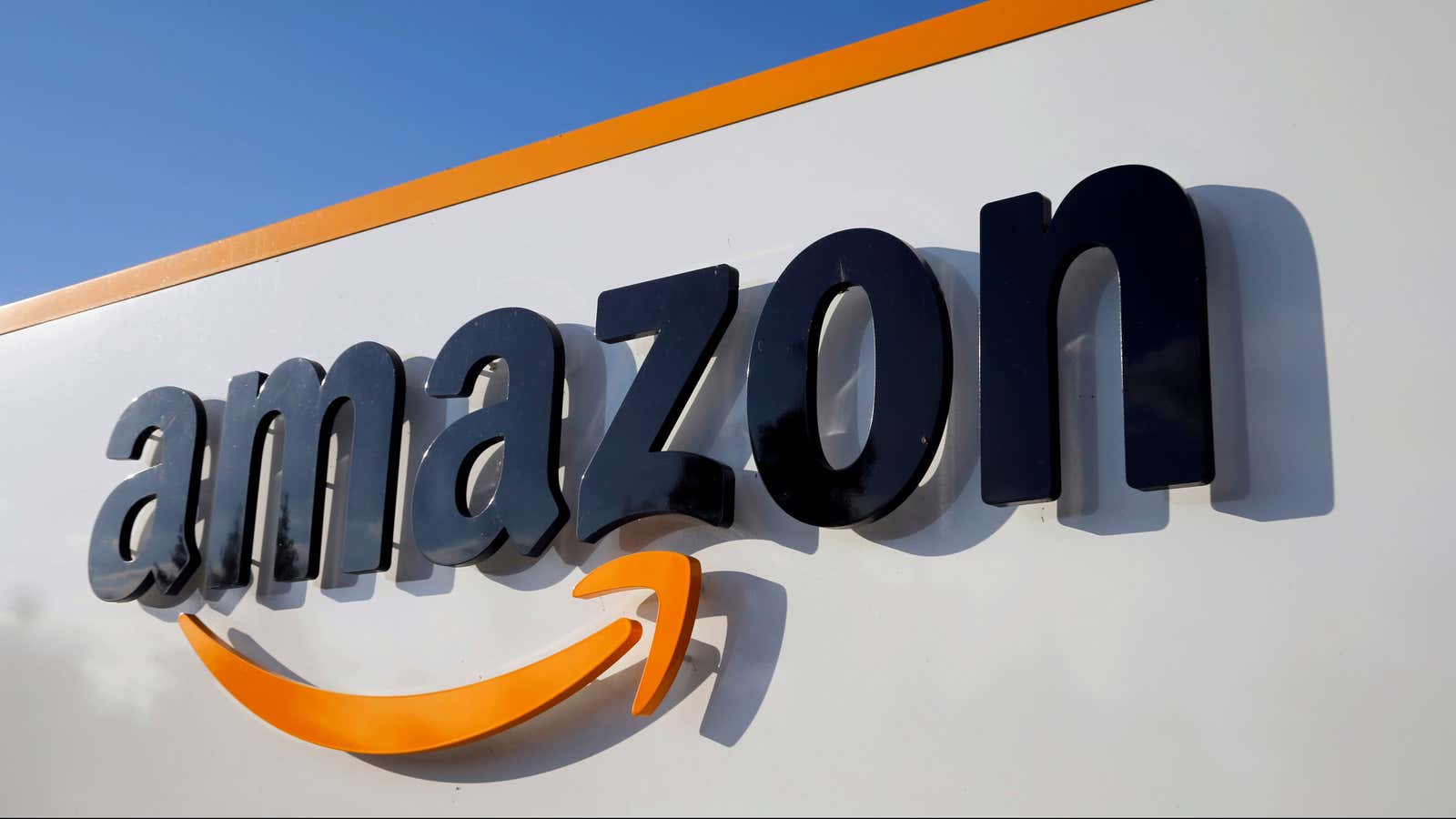Amazon’s third-party marketplace is chock-full of independent sellers hawking everything from Korean face masks to out-of-print books and moon boots. From a business perspective, the system works great for the e-commerce giant: Amazon gets to sit back and collect fees from those sellers, whose sales on the platform continue to grow. In 2017, for the first time, more than half the products sold on Amazon came from those marketplace listings, rather than from Amazon itself.
But it’s also causing at least one major headache for Amazon. Some third-party sellers have been using the reach of Amazon’s marketplace as an opportunity to sell counterfeit and pirated items. The pressure on the company has been growing as brands such as Birkenstock and Mercedes Benz have lambasted it for not being able to control the problem. Now, CNBC reports, Amazon for the first time has acknowledged sales of counterfeits and pirated items as a risk in its annual earnings report to investors and the US securities and exchange commission.
Under the section of “risk factors” to the business, Amazon says it “could be liable” for the activities of its sellers, and explains:
Under our seller programs, we may be unable to prevent sellers from collecting payments, fraudulently or otherwise, when buyers never receive the products they ordered or when the products received are materially different from the sellers’ descriptions. We also may be unable to prevent sellers in our stores or through other stores from selling unlawful, counterfeit, pirated, or stolen goods, selling goods in an unlawful or unethical manner, violating the proprietary rights of others, or otherwise violating our policies. Under our A2Z Guarantee, we reimburse buyers for payments up to certain limits in these situations, and as our third-party seller sales grow, the cost of this program will increase and could negatively affect our operating results. In addition, to the extent any of this occurs, it could harm our business or damage our reputation and we could face civil or criminal liability for unlawful activities by our sellers.
The risk factors companies list in these reports don’t always come back to bite them. As required, they disclose all potential issues.
Still, Amazon adding third-party sales of fakes to its risk factors signals how big a problem the matter has become. In October 2018, the American Apparel and Footwear Association, a large industry trade group representing more than 1,000 brands, even asked the Office of the United States Trade Representative to add some of Amazon’s overseas marketplaces to the list of “notorious markets” it compiles each year. The list has included markets such as China’s Taobao, which has a reputation of being rife with fakes.
Consumer warnings keep popping up too. A couple weeks ago, one writer at The Atlantic, Deborah Copaken, described in detail her inadvertent purchase of a fake Canada Goose coat. “Often, the victims are people like me,” she wrote—that is, people who aren’t familiar with the ins and outs of Amazon, and who don’t realize that Amazon is not behind the sales of all the goods on its marketplace.
Amazon has measures in place to thwart counterfeiters, including automated systems and teams of engineers, research scientists, program managers, and investigators. It told Copaken that more than 99% of Amazon pages customers visit haven’t been flagged for potential infringement.
Still, the rise of fake products has proved a challenge for the company as its marketplace grows. The risk appears to be growing too.
